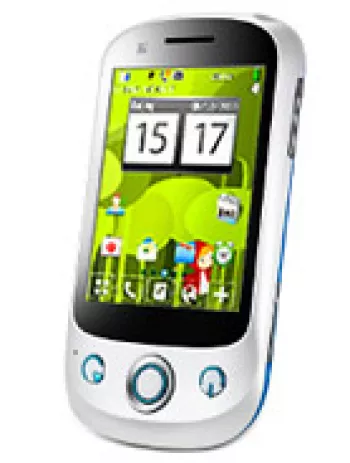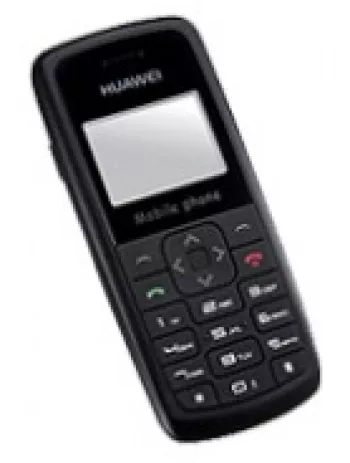
Introduction to Huawei U120
Huawei, a brand known for its innovative technologies, introduced the Huawei U120 in the first quarter of 2007. This mobile device, targeted at the mid-tier market, represented a time when feature phones were prevalent, providing essential communication features to users worldwide. The U120, much like other phones of its era, concentrated on delivering fundamental mobile communication functions, accompanied by a few additional features for enhanced user experience. Though the phone is now classified as discontinued, it provides a glimpse into the technological landscape of mobile devices from the mid-2000s.
Design and Build
The Huawei U120 was designed for simplicity and ease of use, featuring compact dimensions measuring 105 x 45.5 x 15.5 mm and a weight of just 90 grams. Its body was designed to fit comfortably in the hand with an easy-to-navigate keypad. The device supported a mini-SIM card and sported a TFT display with 256K colors. Despite the small screen size of 1.8 inches, the display delivered decent pixel density at approximately 157 pixels per inch, a typical setup for phones during that era. This design focus ensured the phone was user-friendly and portable.
Display Quality
The screen of the Huawei U120 served its primary purpose by providing a clear display for dialing numbers, sending messages, and navigating through the phone’s simple menu system. With a resolution of 176 x 220 pixels, it was sufficient for displaying text and basic graphics with reasonable clarity. The color capacity of the screen, though modest by today's standards, was adequate for its intended use, providing a satisfactory user experience for basic information access.
Camera Features
Equipped with a 1.3-megapixel main camera, the Huawei U120 allowed users to capture basic images and videos. This was a useful feature at the time when mobile photography was beginning to gain traction among users worldwide. The phone also included a VGA front camera suitable for video calls. While the camera specifications wouldn't compete with smartphones today, at its time, they provided an additional layer of functionality and convenience for casual photography and video communication.
Network Capabilities
The Huawei U120 supported GSM 900/1800/1900 bands and UMTS 2100, making it capable of operating on both 2G and 3G networks. With a maximum data transfer speed of 384 kbps on 3G, the phone offered decent web browsing and email capabilities by the standards of its time. Users could access the internet using the built-in WAP 2.0/xHTML browser, and the inclusion of messaging options like SMS, MMS, and Email ensured connectivity and communication were at the forefront of its features.
Memory and Storage
The phone came with a microSD card slot that supported expandable storage, which was a crucial feature for saving contacts, messages, and media files. The internal phonebook capacity could hold up to 1000 entries, and users could store up to 20 records each for dialed, received, and missed calls. This memory configuration was ample for daily usage and reflected the usage patterns of the period, where extensive storage needs were not as prevalent as today.
Multimedia and Connectivity
For entertainment, the Huawei U120 included features such as an FM radio and support for various audio formats via its built-in media player. It also had a 3.5mm headphone jack, which allowed easy connectivity with headphones and other audio devices. The phone had Bluetooth version 1.1, facilitating basic file transfers between devices. USB 2.0 support ensured that users could connect their phones to a laptop or a PC for media transfer and device management with relative ease.
Battery Life
The device was powered by a removable Li-Ion battery, offering a standby time of up to 300 hours. This battery life was considered robust for a feature phone, ensuring users could go days without needing to recharge under moderate usage conditions. The option for a removable battery also provided users with the convenience to carry an extra battery if needed, which was a common practice at the time for those who required extended usage away from charging facilities.
Additional Features
Other notable features of the Huawei U120 included a robust messaging suite with support for SMS, MMS, and Email, thereby offering versatility in communication. The phone also included built-in games suitable for casual gaming and a basic set of productivity tools that users expected in feature phones. Additionally, the U120 included an address book and organizer, supporting users in keeping track of their contacts and daily schedules. The device's grey color gave it a professional appearance, appealing to a wide range of consumers.
Legacy and Impact
Though discontinued, the Huawei U120 remains a memorable device for many users who transitioned from basic mobile phones to something slightly more advanced. It represented a move towards integrating multimedia and internet capabilities beyond basic calling and messaging, setting a precedent for future mobile devices. The phone captured a snapshot of the transitional phase in mobile technology, paving the way for more advanced future innovations, like touchscreen smartphones with extensive multimedia capabilities.
Conclusion
The Huawei U120 served its purpose well during its time, offering a range of features that made mobile communication and media consumption more accessible. It demonstrated Huawei's commitment to providing versatile and affordable mobile solutions to a global audience. While technology has far surpassed these early devices, looking back at the Huawei U120 offers a valuable perspective on how far mobile technology has come and a reminder of the building blocks that led to today's sophisticated smartphones.
Key Features of Huawei U120
- Support for GSM and UMTS technology, enabling 2G and 3G network access.
- Compact and lightweight design with dimensions of 105 x 45.5 x 15.5 mm and weighing 90 g.
- TFT display capable of showing 256K colors for a vibrant viewing experience.
- Expandable memory through a dedicated microSD card slot.
- Main camera with 1.3 MP resolution, including video capture capability.
- Supports FM radio and includes a 3.5mm audio jack for versatile audio options.
- Bluetooth version 1.1 for wireless connectivity.
- Messaging support for SMS, MMS, and Email.
- Browser supports WAP 2.0/xHTML with RSS feed reading capabilities.
Huawei U120 Main Disadvantages
- No WLAN support, making it less suitable for users who rely on Wi-Fi connectivity.
- Bluethooth version is outdated (1.1), which might result in slower data transfer rates and compatibility issues with newer devices.
- The screen size is relatively small (1.8 inches) with a low resolution of 176 x 220 pixels, which could affect user experience with media and text readability.
- The primary camera is only 1.3 MP, potentially leading to lower quality images compared to modern smartphones.
- No GPS positioning available, limiting navigation functionalities.
- Lack of sensor technologies that are common in more recent devices.
- No Java support, which might restrict the installation of certain applications.
- The phone design and technology are outdated, as it was launched in 2007 and is now discontinued.

View Also
More Phones
All Rights Reserved +14268 Phones © Mobilawy 2025
























